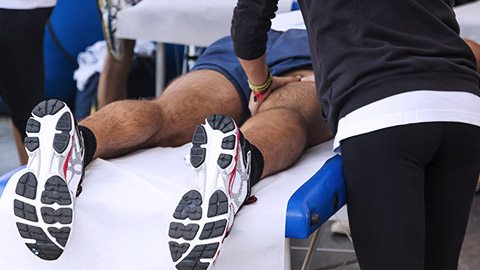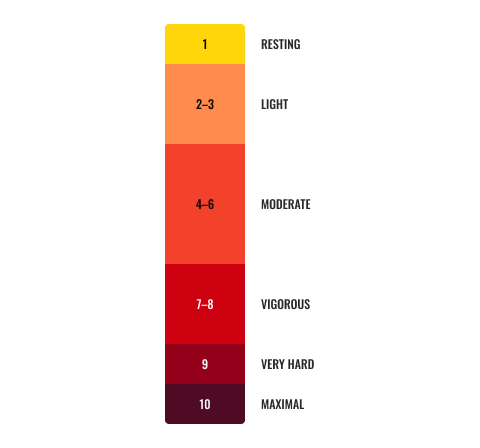In this topic, you’ll gain an understanding of the ethical and legal considerations necessary for personal trainers to provide their clients with the best possible service experience.
We’ll focus on 2 significant organisations in the fitness industry: Exercise New Zealand and REPs (the NZ Register of Exercise Professionals).
- REPs is a non-profit organisation that provides a quality assurance system for the exercise industry. Its primary objective is to ensure that exercise professionals meet the standards for competency, professionalism, and safety in the fitness industry.
- Exercise New Zealand is the national association for fitness professionals, fitness facilities, and suppliers to the fitness industry. Members of Exercise New Zealand can access a range of resources and training courses to stay up to date with the latest industry standards and best practices. Exercise New Zealand operates and runs REPs.
By understanding the REPs Code of Ethical Practice and Scope of Practice, and applying these to your interactions with clients, colleagues, and other professionals; you can maintain high standards of ethical practice.
We’ll cover:
- Ethical practice
- Register of Exercise Professionals (REPs)
- Exercise Association of New Zealand (EXNZ)
- Ramifications of unethical conduct
- Application to routine interactions

Within the fitness industry there are actions and behaviours which are appropriate and those which are not.
The term ethical practice refers to actions and behaviours which are accepted within your practice. Disregarding or failing to meet these minimum standards can have differing levels of consequences. Like many industries, there have been controversial stories arising over the years outlining examples of non-ethical behaviours within the fitness industry which have tarnished the reputation of the industry.
Examples of unethical conduct are (but not limited to):
- Dishonest representation of your skills
- Abusing client confidentiality
- Breaking professional boundaries
- Not listening to your client
Dishonest representation of your skills
"Fake it till you make it" is a common term used in various fields, including the fitness industry. However, this is a business approach which should be avoided. Training or advising clients (or colleagues) in areas you are not yet qualified is a risky move that violates the professional code of conduct.

Case Study: Inappropriate Use of Massage Therapy
A personal trainer, Sarah, had been working with her client, John, for several months. John was experiencing muscle soreness and tightness, so Sarah suggested incorporating massage therapy into their sessions. Although Sarah did not have formal qualifications in massage therapy, she believed that her knowledge of the body and her experience with clients qualified her to perform these techniques.
During one of their sessions, Sarah performed massage techniques on John's legs. However, she applied too much pressure and caused John to experience pain and discomfort. John reported the incident to Sarah's gym and to the New Zealand Register of Exercise Professionals (REPs).
Upon investigation, it was found that Sarah had no formal qualifications in massage therapy and had overstepped the boundaries of her expertise. As a result, she was issued a warning by REPs and required to undergo further education in massage therapy before providing any further services in this area.
This case highlights the importance of fitness professionals staying within their scope of practice and ensuring that they have the necessary qualifications before performing any techniques on clients. Inappropriate use of massage therapy, or any other technique, can be potentially dangerous and can cause harm to clients.
In New Zealand, the REPs code of ethics requires fitness professionals to pursue ongoing education annually (REPs - Continuing Education, n.d.). This presents a perfect opportunity to acquire additional skills and qualifications in areas that interest you. Honesty is the most effective approach, so avoid claiming proficiency in something you lack confidence or qualifications in.
Abusing client confidentiality
During the pre-screening process and sessions with your clients, you will be provided with private information such as:
- Contact details (address, email address, phone number)
- Date of birth
- Medical information
- Bank details
This information is provided to you under a legal and ethical promise as per the Privacy Act (2020). We’ll learn more about the Privacy Act in Personal Training as a Business. But for now, it is important to know that incorrect use or distribution of this information can result in serious ramifications such as affecting your reputation, your employer’s reputation, and most importantly, the safety of the client. Breaches of the Act are also subject to legal and financial penalties.
Breaking professional boundaries
It's important for personal trainers to maintain professional behaviour in all aspects of their work. Engaging in romantic relationships with clients or colleagues can potentially damage your reputation, and if you do find yourself in such a relationship, it's important to end the business relationship immediately.
Personal trainers work closely with clients, but they must maintain professional boundaries and be aware of appropriate and inappropriate physical touch. It is essential to ensure that any physical touch is appropriate and necessary for the purpose of the session. Maintain awareness of clients' cultural backgrounds and personal boundaries when it comes to physical touch. Any inappropriate touch, such as touching clients in a sexual manner, is completely unethical and can result in serious consequences, such as being banned from the industry or facing legal action. Therefore, it is crucial for trainers to understand and adhere to the appropriate physical boundaries when interacting with clients.
Using your mobile phone or talking to other gym members during a training session is unprofessional and can pose a safety risk. It's crucial not to ignore clients in any situation. In the event of an accident or emergency, failing to provide appropriate care or attention could be considered negligence and result in an investigation by your employer or legal authorities. Always prioritise the safety and wellbeing of your clients.
Not listening to your client
This may sound obvious, but you’d be surprised how often this happens. Your client is your source of truth when it comes to your programme design and how their body is responding to it.
Trainers and fellow exercise professionals have been known in the past to want to “smash their clients”. This is what some trainers believe they are required to do. However, without listening to your client, their needs, preferences, their medical conditions, and injury history you could find yourself in a troubling situation where your client become injured, or a condition is further exacerbated because of your training session.
If you do not listen to your client, how do you know what they want to achieve?

Registrational and industry bodies have developed registration requirements to safeguard:
- Exercise professionals
- Exercise facilities
- Education providers
- The fitness industry
These registration requirements serve as guidelines to support fitness professionals in various ways including:
- Business set up support
- Guidance of where to find resources and contacts
- Ethical guidelines
Using these resources can help you be successful in key areas of your career, including maintaining your reputation and your relevance within the industry.
One such registrational body is REPs - NZ Register of Exercise Professionals.
Who are REPs?
REPs, the Register of Exercise Professionals, is a registrational body for exercise professionals, exercise facilities, and education providers based in New Zealand.
The fitness industry has both reputable and disreputable members. To maintain a high level of industry reputation, REPs has implemented registration criteria that candidates must meet annually to hold registration. Meeting these standards earns recognition from REPs, indicating that the individual meets industry standards.
Registration with REPs is like a warrant of fitness, rather than a one-time application. Registration must be renewed on an annual basis with criteria that needs to be met upon each application for registration. Examples of criteria include:
- Initial qualifications ensuring exercise professionals are competent to undertake their role
- Ongoing education to ensure they keep up to date (including first aid and/or CPR)
- Following the REPs Code of Conduct
To achieve and maintain your REPs registration, you are required to achieve 10 CPD (Continuing Professional Development) points per registration year via the completion of recognised courses.
Further Reading
Read the Continuing Professional Development page on the REPs website. Can you find some examples of workshops, lectures, or online courses that interest you?
Please note, first aid and CPR courses do not count towards your CPD points.
Benefits for registered REPs professionals
When successfully registered with REPs, you can call yourself a Registered Exercise Professional. This is a mark of recognition that you meet and uphold the standards of the industry. Those who fail to meet these standards or who are deemed unsuitable to continue working in the industry will be unsuccessful for registration with REPs.
REPs also provides registered members of the fitness industry with the following tools:
- Search function for fitness professionals and members of the public to find reputable fitness professionals, exercise facilities, and educational providers
- Discounts on ongoing education courses provided by a variety of organisations
- A complaints system for any person that wishes to complain about a registered trainer or registered facility
- Discounts to events such as FitEx, the annual fitness industry conference, and the Exercise New Zealand Roadshow
- Free fitness professional email address @registeredtrainer.co.nz
- Access to products and services and special rates
- OneMusic Licence
To learn more about all the benefits of being registered with REPS visit ‘What we do for trainers, facilities and education providers’.
REPs Code of Ethical Practice and Scope of Practice
REPs registration reflects that your professional knowledge is up to date and that you have a commitment to upholding an ethical level of conduct.
Exercise professionals add significant value to the health, wellness and physical wellbeing of New Zealanders. In performing their role, it is expected that all reps registered exercise professionals maintain a high degree of professionalism and ethical conduct.REPs
As a registered exercise professional, you must abide by the Code of Ethical Practice and work within your Scope of Practice.
A code of ethical practice is a set of guidelines that outlines the expected behaviour and actions of professionals in a particular field. It helps ensure that professionals act in a responsible and trustworthy manner. It provides a framework for making ethical decisions in difficult situations. Codes of ethical practice often cover areas such as confidentiality, honesty, integrity, respect, and responsibility, and may include specific rules or principles that must be followed. They help to maintain professional standards and promote public trust in the profession.
A scope of practice refers to the boundaries that define the responsibilities, duties, and limits of a profession or occupation. It outlines the specific activities, procedures, and treatments that an individual in a particular role is trained and authorised to perform.
A scope of practice is usually established by regulatory bodies or professional associations to ensure that practitioners operate within their area of expertise and that public safety is protected.
Code of Ethical Practice
There are 5 principles of the REPs Code of Ethical Practice:
- Uphold professional standards
- Maintain safety
- Appropriate relationships
- Respect privacy
- General professionalism
Use the Code of Ethical Practice to answer the following questions based on practical application of the Code.
Breaches of the Code can be reported to REPs by fellow exercise professionals, fitness employers, and members of the public.
Scope of Practice
The Scope of Practice for individuals registered with REPs outlines the tasks and roles that they are qualified to undertake. This includes:
- Group Exercise
- Exercise Consultant (Level 1 and 2)
- Personal Trainer (PT)
These roles have different levels of responsibilities and limitations. The levels of practice specify what an exercise professional is allowed to do, including designing group exercise classes, creating personalised exercise programmes, and providing personal training services. The Personal Trainer (Contractor) level also includes professional liability insurance for the benefit of the trainer, facility, and clients.
The Exercise Prescription Level Requirements provide further details about what personal trainers can and cannot do.
Use the Exercise Prescription Level Requirements to answer the following questions.

The Exercise Association of New Zealand (Exercise New Zealand or EXNZ), formerly FitnessNZ, is a not-for-profit representative organisation. Their mission is to:
Proactively support a sustainable exercise and fitness industry in New Zealand by growing participation in structured exercise through advocacy, information and industry standards.REPs
EXNZ members are not health and fitness individuals, but rather, organisations that exist within the health, fitness, and exercise industry that operate fitness/exercise facilities like fitness centres and health clubs. Members include commercial operators (e.g., Les Mills), non-profit organisations (e.g., YMCA), and local government council facilities.
What does Exercise New Zealand do?
EXNZ plays a crucial role in upholding the fitness industry through various activities, including:
- Advocating for registered fitness facilities and promoting their interests
- Developing resources to help address industry issues, develop Human Resources, and provide comprehensive Health and Safety guidelines for New Zealand fitness facilities
- Collaborating with REPs to develop standards in which exercise professionals are involved
- Organising events that facilitate the professional development of individuals within the exercise industry and recognise their accomplishments.
EXNZ supports professionals, providers, and the public.
- They operate REPs, providing registration, tools, and support to exercise professionals.
- They support exercise businesses and offer resources, advocacy, and standards development in conjunction with REPs.
- They encourage the public to join an exercise provider to receive the benefits of exercise and offers subsidised gym memberships for first-time members. They also recommend using providers registered with REPs or YogaNZ for safety. EXNZ also have a complaints process to support members of the public if they feel an exercise professional has breached the code of conduct or uses unregistered staff.
Exercise New Zealand also provides links to portals advertising fitness related job vacancies. The main job search engine within the fitness industry in New Zealand is FITNZ.
EXNZ operates and runs the Register of Exercise Professionals (REPs). As we covered earlier, exercise professionals registered with the REPs agree to the Code of Ethical Practice.
As with all industries, there are consequences should unethical conduct be evident within the fitness industry.
Over the years, the fitness industry has received some bad press which can affect the industry as a whole. Look at the following example taken from the Brisbane Times which discusses how a personal trainer and the fitness company he was associated with underwent a legal investigation after his client spent a week in hospital following his personal training session.
National gym chain, personal trainer sued after man spends week in hospital.
Australian gym chain, Snap Fitness, was sued for negligence after a client was hospitalised for more than a week following a personal training session. The client was diagnosed with rhabdomyolysis, a rapid breakdown of severely injured muscle tissue that can threaten the kidneys. Doctors blamed this on "excessive exercise." The client is claimed about $200,000 in damages and blamed the exercise regime he was put through. Snap Fitness and the personal trainer contested the lawsuit, with both denying negligence. The issue caused concern among experts is whether the trainer was an employee of the gym, which could affect the industry. The case sets a dangerous precedent with regards to the line between employee and contractor.
You can read more about the story on the Brisbane Times.
This next example does not involve a personal trainer breaching the code, but rather a physiotherapist. But the lessons can be applied across the health and fitness industry. The Health and Disability Commissioner said the physio clearly breached professional boundaries, allowing his relationship with the client to blur into something more personal:
Breaches of the REPs Code of Ethical Practice
If anyone believes a REPs registered exercise professional is in breach of the Code, they can make a formal complaint to REPs. Cases may be brought before a REPs disciplinary panel, and the panel is able to make binding decisions.
If a breach is found, sanctions may include suspension or termination of REPs registration, a reprimand or formal warning, or other determination the panel considers appropriate.
Further Reading
Read the complaints process on Exercise New Zealand’s website for further details of this procedure.
We’ve read about unethical behaviour, and ramifications of breaching the Code. But how can we apply the Code to routine interactions with clients, colleagues, and other health professionals?
Here are 3 case studies that illustrate how the Code of Ethical Practice applies day to day on the gym floor. Read each one and identify what principle of the Code it illustrates.
The principles:
- Uphold professional standards
- Maintain safety
- Appropriate relationships
- Respect privacy
- General professionalism

Case study 1: A client with an injury
Jane takes on a new client who is recovering from a serious injury. Before starting any exercise programme, Jane conducts a thorough pre-screening of the client to ensure they are medically cleared for exercise.
During the session, Jane takes care to respect the client's physical limits and ability, and communicates clearly about the costs associated with the training. Jane also ensures any physical contact during the session is appropriate and carried out with the client's full consent.
Case study 2: Fast progress
John is working with a new client who is keen to make fast progress. John takes care to respect the client's physical limits and ability. He doesn't push them beyond what they can safely handle.
When the client asks about the use of performance-enhancing substances, John explains that they are prohibited and will not be advocated or condoned.
Case study 3: Suggestive comments
Sarah is working with a client who has become overly friendly and has started making suggestive comments during training sessions. Sarah is careful to maintain professional boundaries and makes it clear that any form of unwanted sexual contact or innuendo is unacceptable.
Sarah ensures that the exercise sessions are focused on the client's fitness goals and maintains a respectful and professional relationship.
Maintain safety
The Code of Ethical Practice also states that registered exercise professionals will maintain safety. Personal trainers can do this by:
- Ensuring that clients are appropriately pre-screened
- Identifying and respecting the physical limits and abilities of clients
You need to observe clients carefully as they perform each exercise, and monitor technique, HR (heart rate), and RPE (rate of perceived exertion).
Rate of perceived exertion (RPE)
The rate of perceived exertion (RPE) scale is a technique used to express how hard someone feels they are working during exercise. It is a useful tool to measure the intensity of their exercise, including cardio and weightlifting.
The RPE scale is a numerical list with assigned values which describe how someone feels on a range of no exertion to maximum effort. The person exercising is asked to rate how hard they feel they’re working considering their breathing rate, heart rate, increased sweating, and muscle fatigue.
There are 2 RPE scales:
- 0 – 10 RPE scale
- 6 –20 Borg RPE scale
When working with your client, use your observations to gauge their RPE accurately. How do they appear? Are they flush in the cheeks? Are they able to speak in full or part sentences?

| Rating | Perceived Exertion Level |
|---|---|
| 0 | No exertion at rest |
| 1 | Very light |
| 2-3 | Light |
| 4-5 | Moderate, somewhat hard |
| 6-7 | High, vigorous |
| 8-9 | Very hard |
| 10 | Maximum effort, highest possible |
| Rating | Perceived Exertion Level |
|---|---|
| 6 | Very, very light |
| 7 | |
| 8 | Very light |
| 9 | |
| 10 | Fairly light |
| 11 | |
| 12 | Somewhat hard |
| 13 | |
| 14 | |
| 15 | Hard |
| 16 | |
| 17 | Very hard |
| 18 | |
| 19 | Very, very hard |
| 20 |
What does RPE look like in practice? Here are some observations to help you and your client accurately assign an RPE value.
1: Resting
- No exertion e.g., sitting, watching TV
2-3: Light activity
- Minimal exertion – feels like it can be maintained for hours.
- Easy to breathe and carry on a conversation e.g., household chores.
4-6: Moderate activity
- Feels like you can exercise for hours.
- Breathing heavily. Can hold a conversation, but sentences become shorter.
7-8: Vigorous activity
- On the verge of becoming uncomfortable
- Short of breath, can speak a short sentence
9: Very hard activity
- Very difficult to maintain the set exercise intensity
- Can barely breathe and speak in short, aggravated, words.
10: Maximal activity
- Feeling almost impossible to keep going
- Completely out of breath, unable to talk.
RPE is traditionally used for cardiovascular exercise but has also been modified for resistance training by using the Reps in Reverse model. The 1 – 10 RPE scale has a correlation with the number of reps in reserve (RIR) or the number of remaining reps that a person could complete with good form, before failing.
| RPE | RIR |
|---|---|
| 1 - 2: Very Light | - |
| 3 - 4: Light to Moderate | - |
| 5 - 6: Moderate to Somewhat Hard | 4 - 6 Repetition Remaining |
| 7: High, Vigorous | 3 Repetition Remaining |
| 8: Very Hard | 2 Repetition Remaining |
| 9: Very Hard | 1 Repetition Remaining |
| 10: Maximum Effort | 0 Repetitions Remaining |
You can also use the talk test to help you decide an accurate RPE rating. The talk test is measured in 3 levels of intensity: low, moderate, and high. The intensity indicates how well the person exercising can hold a conversation.
If a person can easily hold a conversation during exercise (talk test low intensity), their RPE is likely 3 – 4. If they are breathing harder but still able to talk (talk test moderate intensity), their RPE is likely 5 – 6. If they are breathing hard, and barely able to talk (talk test high intensity), their RPE is likely 8 –9 (Mahaffey, 2022).
Monitor technique
Proper exercise technique and safety is crucial when starting an exercise programme. Certain precautions such as proper posture and breathing patterns need to be explored and understood to maximise the programme effectiveness and minimise the risk of injury.
Correct posture is essential to gain the best physiological response from exercise and ensure safety. Proper posture helps to ensure correct exercise technique and decreases unwanted stress on the spine and joints. Common unwanted postures to avoid include:
Note - these are general guidelines. Sometimes we purposely turn toes out to prevent valgus knees. E.g., sumo squat and sumo deadlift.
These postures during exercise are dangerous and can potentially contribute to joint pain and injury (National Academy of Sports Medicine, n.d.).
If at any time during pre-screening, fitness testing, or exercising you notice a client’s technique or posture has deteriorated, stop and correct. Deteriorating technique or posture can also indicate the client has reached maximal effort and needs to rest.
